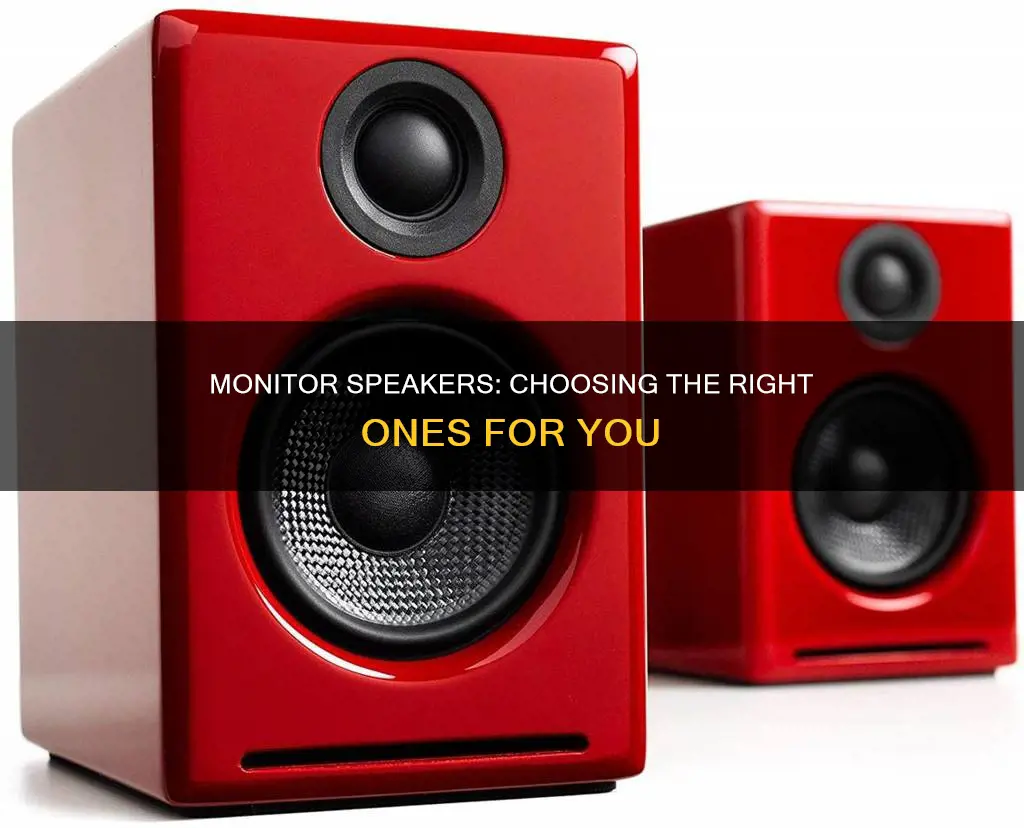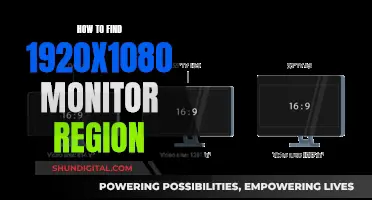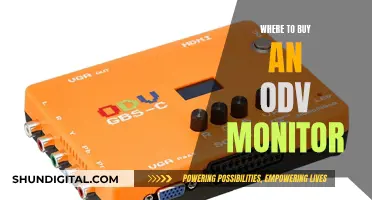
When it comes to studio monitors, there are a lot of options to choose from. Studio monitors are speakers designed for music production, mixing, and mastering, providing an accurate frequency response to help you make decisions about your sound. The right choice depends on your specific needs, such as room size, budget, and the type of music you produce. Here are some key factors to consider when choosing studio monitors:
- Room Size: If you have a small room, smaller woofers (around 5-inch) are sufficient. For larger spaces, consider monitors with larger drivers for more volume and low-end response.
- Type of Music: For bass-heavy music, look for monitors with good low-end response. For more balanced genres, focus on midrange and high-frequency clarity.
- Budget: Entry-level monitors offer good sound at an affordable price, while higher-end models provide advanced features for professionals but at a higher cost.
- Room Treatment: If your room isn't acoustically treated, consider monitors with DSP tuning or room correction features to compensate for acoustic anomalies.
- PreSonus Eris 3.5: Best for the cheapest option, available for less than $100/pair.
- Adam Audio T5V: Delivers superb sound and connectivity for under $500/pair.
- M-Audio BX5-D3: Offers exceptional clarity and room correction features, ideal for budget-conscious mix engineers.
- KRK Rokit RP5 G4: Serious speakers with a wide frequency range and onboard EQ, perfect for home studio enthusiasts.
- IK Multimedia iLoud Micro: Compact size, clear and accurate sound, and room-correcting EQ features, great for smaller rigs and laptop producers.
- Yamaha HS8: Industry-standard monitors providing tonal clarity and sonic unity, widely used in studios and well-received.
- Genelec 8020D: Compact and professional-sounding monitor, delivering a noticeable step up in clarity and accuracy through the midrange.
| Characteristics | Values |
|---|---|
| Studio Monitor Speakers | Yamaha, IK Multimedia, Focal, M-Audio, KRK, JBL, PreSonus, Genelec, Neumann, Kali Audio, Alesis, Pioneer DJ |
| Frequency Response | 35Hz - 40kHz |
| Speaker Configuration | 2-way, 2.5-way, 3-way |
| Tweeter Type | Ribbon, Silk Dome, Kevlar, Soft Dome, Metal Dome, Titanium Fabric, Beryllium |
| Inputs | XLR, TRS, RCA, Bluetooth |
| Digital Connectivity | Yes/No |
What You'll Learn

Studio monitors for beginners
Studio monitors are an essential component of any home studio setup, allowing you to hear every detail of your music with precision. When choosing studio monitors, it's important to consider factors such as room size, budget, and the type of music you produce. Here are some recommendations for studio monitors that are well-suited for beginners:
PreSonus Eris Studio Monitors
The PreSonus Eris series offers compact and powerful studio monitors that deliver accurate audio performance, making them ideal for small spaces and tight workspaces. They provide a decent frequency range and feature tuning controls for room adjustment. With versatile input options, including RCA and 1/4" TRS, the Eris monitors are perfect for beginners and professionals who need a versatile setup.
Yamaha HS5 Bass Reflex
The Yamaha HS5 is a revered studio monitor known for its accuracy and neutral sound reproduction. It offers a flat frequency response, making it perfect for critical listening, mixing, and mastering tasks. The built-in room control feature ensures accurate monitoring regardless of your studio's acoustics. While the bass response might not be as punchy as larger monitors, the HS5 excels in delivering accurate mid and high frequencies.
JBL Professional 305P MkII Studio Monitor
The JBL 305P MkII is a versatile studio monitor with a wide sweet spot, thanks to its Image Control Waveguide technology. It delivers detailed sound, with a focus on the low end, making it suitable for larger studios or bass-heavy productions. The built-in EQ controls allow you to adjust the sound according to your room's acoustics. With a total power output of 82 watts, these monitors are adaptable and powerful.
Mackie CR5-XBT Multimedia Monitors
The Mackie CR5-XBT studio monitors offer a blend of professional sound and multimedia functionality. They feature built-in Bluetooth for wireless streaming, making them ideal for both studio work and casual listening. With a 5" woofer and a 0.75" tweeter, they provide decent low-end punch and crisp highs. The front-panel controls, Bluetooth streaming, and a headphone jack make them a convenient choice for desktop use.
KRK ROKIT 10-3 G4
The KRK ROKIT 10-3 G4 is a high-end, three-way studio monitor that delivers accurate sound reproduction across the entire frequency range. It features a built-in DSP with room correction and LCD visual EQ, ensuring a well-balanced sound. The 10" woofer provides deep, controlled bass, while the Kevlar midrange and tweeter ensure clear mids and highs. These monitors are ideal for professionals who demand accurate sound and advanced room correction features.
M-Audio BX5 Studio Monitor Speaker
The M-Audio BX5 is a budget-friendly studio monitor that delivers detailed sound and strong bass response. It features a 5" Kevlar woofer and a 1" silk dome tweeter, providing accurate sound with minimal distortion. The rear-mounted bass port adds depth to the sound, and the Acoustic Space Control allows for room adjustments. These monitors are an excellent choice for beginners and those on a budget.
Adam Audio A7V Powered Studio Monitor
The Adam Audio A7V is a professional-grade 2-way powered studio monitor, ideal for project studios and smaller control rooms. It features a 7-inch woofer and a ribbon tweeter, delivering exceptional clarity and accuracy. The built-in DSP room correction ensures that these monitors can adapt to any studio environment. The vertical orientation provides accurate imaging and soundstage. These monitors are perfect for professionals who prioritize precision and adaptability.
Choosing Monitors for a Cozy 9x9 Room
You may want to see also

Studio monitors for small spaces
If you're setting up a small studio, you'll need a pair of compact studio monitors that deliver accurate sound without taking up too much space. Here are some of the best options available:
IK Multimedia iLoud MTM
These studio monitors are an excellent choice for those short on space. They offer a balance between size, audio quality, and affordability. The iLoud MTM features a compact design, delivering detailed sound with a frequency response of 40 Hz to 24 kHz. It includes a built-in calibration system to optimise the sound for your room, ensuring you get precise and accurate monitoring. Its small size makes it perfect for desktop use or any limited space.
PreSonus Eris E3.5
The PreSonus Eris E3.5 is a compact and powerful studio monitor ideal for small spaces. It delivers accurate audio performance with a frequency response of 80 Hz to 20 kHz. The tuning controls allow for room adjustment, ensuring you get the best sound for your setup. With a 3.5-inch woofer and a 1-inch silk dome tweeter, it offers clear and balanced sound. Its versatile input options, including RCA and 1/4" TRS, make it suitable for various environments.
Yamaha HS5
The Yamaha HS5 is a popular choice for small studios, known for its accuracy and reliability. It delivers a neutral sound, making it perfect for precise audio editing. With a frequency response of 54 Hz to 30 kHz, it provides clear and detailed sound. The HS5 features a 5-inch woofer and a 1-inch dome tweeter, offering a flat frequency response. It also includes room control features to optimise the sound for your space.
KRK Rokit 5 G4
The KRK Rokit 5 G4 is a popular entry-level option for small studios. It offers a powerful sound with a frequency response of 52 Hz to 35 kHz. The distinctive yellow cones are hard to miss, and the monitors are packed with features. They provide good bass response and clear mid and high frequencies. The Rokit 5 G4 is an excellent choice for smaller home studio setups, offering quality sound at an affordable price.
JBL Professional 305P MkII
The JBL 305P MkII is a versatile studio monitor that performs well in small to medium-sized rooms. It delivers excellent clarity across the frequency spectrum, with a range of 49 Hz to 20 kHz. The 5-inch woofer and 1-inch tweeter provide a broad sweet spot and impressive low-end performance. The built-in EQ controls allow you to adjust the sound to your room's acoustics. Its stylish and modern design makes it a great addition to any studio.
Asus Monitor and AMD Radeon RX570: A Perfect Match?
You may want to see also

Studio monitors for mixing and mastering
When it comes to studio monitors for mixing and mastering, there are several factors to consider to ensure optimal sound quality. The type of studio monitor, frequency response range, power output, speaker impedance, speaker size, and room acoustics all play a crucial role in achieving precise and complete sound.
- JBL 305P MkII Studio Monitor: Features accurate, low-distortion JBL transducers, Image Control Waveguide technology for a wider sweet spot, dual Class-D amps for powerful output, input sensitivity control, and various connection options.
- KRK Rokit 8 G4 Studio Monitor: Offers an extended frequency range, advanced DSP processing, adjustable room acoustics, multiple input options, and a built-in signal generator. It also has a sleek design that blends into any studio.
- Presonus Eris E8 XT Studio Monitor: Provides accuracy and clarity with an 8-inch woofer and 1.25-inch silk-dome tweeter, delivering a frequency range of 33 Hz to 22 kHz. It offers 140 watts of power and has Acoustic Tuning control for bass and high-frequency adjustments.
- Yamaha HS8 Studio Monitor: Renowned for its accuracy, clarity, and build quality, the Yamaha HS8 features an advanced bi-amp design, custom-crafted woofers and tweeters, and a room control feature to optimize performance based on room acoustics.
- Focal Shape 65 Studio Monitor: This active studio monitor delivers precise frequency response and exceptional sound quality. It features Focal's signature inverted-dome tweeter and flax drivers for detailed highs, mids, and lows. Its compact design makes setup easy, and it excels in stereo imaging and depth, making it ideal for mixing and mastering engineers.
When choosing studio monitors for mixing and mastering, it is essential to consider your specific needs, budget, and the acoustic properties of your studio space. Additionally, don't hesitate to experiment with different audio monitors before making a purchase to ensure you find the ideal solution for your studio setup.
Recording Monitors: Interface Connection Guide for Beginners
You may want to see also

Studio monitors for bass-heavy music
Bass-heavy music requires studio monitors that can accurately reproduce low-end frequencies. Here are some options to consider, along with their key features and benefits:
Yamaha HS8
The Yamaha HS series is widely regarded as one of the best budget-friendly studio monitor options, especially for home producers. The HS8, being the largest in the series, offers the best bass response with an 8" LF woofer and 120W of output power. Its exceptional flat frequency response, including in the low frequencies, makes it a popular choice among artists and producers of bass-heavy music.
Mackie XR824
The Mackie XR824 is a powerful studio monitor with a wide frequency range of 36Hz to 22kHz. It boasts an 8" LF woofer that provides an exceptionally clean and deep low end relative to other monitors in its price range. The XR824s also feature controls that allow you to optimise their output according to your mixing environment, giving you complete control over your sound. These monitors are a favourite among artists known for their heavy bass-driven music.
Focal Shape 65
The Focal Shape 65 delivers not only stunning looks but also exceptional sound quality. It is designed for small acoustic spaces, such as home studios or small professional studios. Across the frequency spectrum, including the low frequencies, this speaker has been consistently praised by critics and users for its tight, controlled, and extended bass response. Well-respected artists and producers of bass-driven music have been seen using Focal Shape monitors.
Adam Audio A7X
The Adam Audio A7X is an award-winning studio monitor that performs exceptionally well across the frequency spectrum, making it a great choice for producers of bass-led music. With a 7" LF woofer, it offers powerful and precise bass with minimal compression. Its wide frequency range of 42Hz to 50kHz provides incredible control over the production process, allowing you to make detailed adjustments to your sound. The A7X is a firm favourite among music producers across various genres, including those known for their bass-heavy productions.
KRK Rokit 5 G4
The KRK Rokit series is a staple in amateur and professional studios, DJ setups, and casual listening speaker systems. They are affordable, high-quality, and deliver an excellent low-end response, making them ideal for bass-heavy music. The Rokit 5 G4 is the smallest speaker in the range, with a 5" LF woofer, making it the most affordable option. Despite its compact size, the G4s have an impressive frequency range of 43Hz to 40kHz and produce a warm, rich low end. These monitors are widely used by producers of bass-driven music.
When choosing studio monitors for bass-heavy music, consider factors such as sound quality, size, and budget. Ensure that the monitors can accurately reproduce low frequencies and have sufficient power and woofer size for the desired bass response. Additionally, take into account the size of your studio space and your budget constraints when making your selection.
Monitoring Internet Bandwidth: Tracking User Activity
You may want to see also

Studio monitors for large studios
When it comes to studio monitors for large studios, there are a few key factors to consider. Firstly, the size of the monitors should be proportional to the size of the room. Larger drivers will be needed to deliver more low-end and volume for bigger spaces. Additionally, the monitors should have the ability to handle midrange and high frequencies efficiently. This can be achieved through additional speakers dedicated to these frequency ranges, but cost and size may be limiting factors.
Another consideration is the type of studio monitor: active or passive. Active monitors, also known as powered monitors, have built-in amplifiers, while passive monitors require external amplification. Active monitors are more common today and offer the advantage of built-in equalizers and gain controls, as well as more advanced features like DSP to compensate for complex room acoustics. However, some engineers prefer passive monitors for their reputation for pristine sound.
- Neumann KH 120: These monitors offer high SPL capabilities, razor-sharp imaging, and extended bass down to 44Hz. They feature DSP-based room alignment and automatic calibration, making them ideal for large professional studios.
- Focal Twin6 Be: With a unique 3-way design and two identical 6.5" drivers for bass and mids, these monitors deliver exceptional sound. Despite their high price, they are extremely popular.
- Genelec 8010: While most Genelec models are too expensive for this list, the 8010 offers a more affordable option while still delivering the trusted quality that the brand is known for.
- Yamaha HS8: Part of the HS series, these monitors combine classic sound with new technology. They feature an isolated mounting system and extra-large magnets for a smoother response over a wider frequency range.
- KRK Rokit 5 G4: Highly recommended for beginners, these monitors offer exceptional value and feature distinctive yellow dots. They are known for their bass-heavy sound and advanced features.
Setting Up a New Desktop Monitor: A Step-by-Step Guide
You may want to see also
Frequently asked questions
The PreSonus Eris E3.5s are a great option for beginners. They are available for less than $100 for a pair and offer a variety of connections.
The IK Multimedia iLoud Micro monitors are compact and produce a clear, accurate sound from a small 3” driver. They are also great for smaller rigs and can be used with laptops.
The Yamaha HS8 Active Studio Monitor is a good option for larger rooms. They have an 8" Cone Woofer, 1" Dome Tweeter and 120 watts of power amplification.







